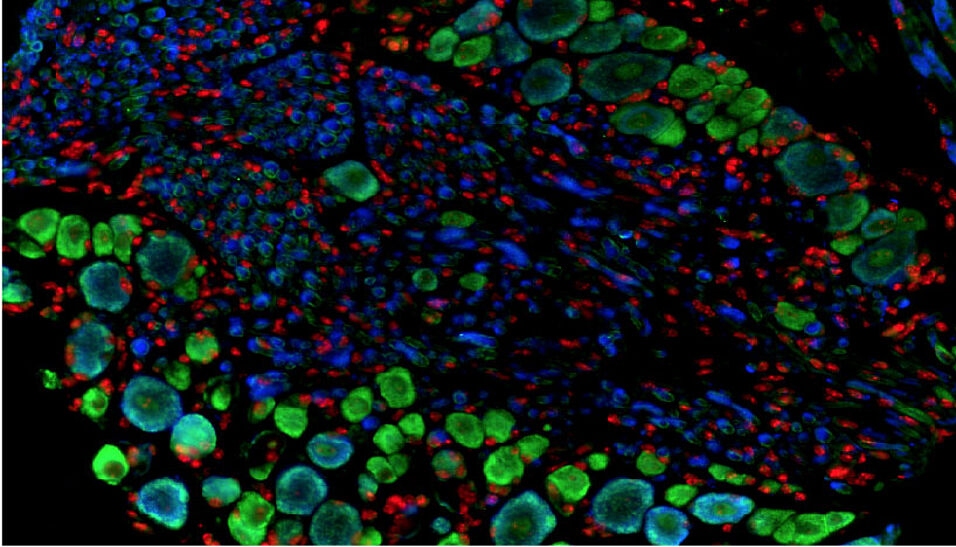In Austria, approximately 1.5 million people are living with chronic pain. This causes significant suffering for affected patients given the limited efficacy of currently available therapies and their strong side effects (think “opioid crisis”). Hanna K. Fischer and Manuela Schmidt from the Division of Pharmacology and Toxicology, University of Vienna, in collaboration with researchers from Germany, demonstrate a novel functional role of the transmembrane protein (Tmem) 160 for nerve injury-induced neuropathic pain, a subtype of chronic pain caused by nerve injury. Mice lacking Tmem160 show reduced pain symptoms immediately after nerve injury. Interestingly, this analgesic effect was specific to male mice but not female mice adding valuable molecular insights into the known fact of sexual dimorphism of chronic pain states. The results of the study were published in “Cell Reports” in December 2021.
Pain is not only a symptom of a disease but can be a disease by itself. While acute pain is absolutely necessary, e.g. when you touch a hot stove you need to be able to feel this burn to retract your hand for avoiding further injury, chronic pain does not fulfill this protective function. For people suffering from chronic pain, the treatment options are often inadequate showing limited efficacy and severe side effects. Therefore, further understanding of the mechanisms of pain and its chronification is of utmost importance to improve available treatment options and find novel ones.
The study, published in Cell Reports, was conducted using a combination of different preclinical pain models, behavioral tests, and diverse molecular methods to study the interactions between sensory neurons and immune cells.
The authors show that specific pain behaviors induced by nerve injury are delayed in male mice lacking the Tmem160 protein. In contrast, female mice do not show this phenotype. Further experiments revealed that Tmem160 plays a role in the communication between neurons and the immune system. For example, male mice lacking Tmem160 exhibit a general reduction of (i) cellular signaling molecules, such as cytokines and chemokines, and (ii) neuronal activity in response to a specific stimulus.
“The specificity of Tmem160 for pain chronification, while leaving helpful acute pain intact, suggest it as a promising target for therapeutic interventions. However, further research is necessary to confirm this hypothesis.” Says Manuela Schmidt, the corresponding author of the study. In addition, some of the methods used in this study will allow a more detailed and unbiased analysis of mouse pain behaviors. For example, video-based recordings of mouse behavior are more objective than regular assays because they offer the possibility of being analyzed by different experimenters to reduce potential bias.
Publication in Cell Reports:
D. Segelcke, H. K. Fischer, M. Hütte, S. Dennerlein, F. Benseler, N. Brose, E. M. Pogatzki-Zahn and M. Schmidt: Tmem160 contributes to the establishment of discrete nerve injury-induced pain behaviors in male mice. In: Cell Reports, 2021 DOI: https://doi.org/10.1016/j.celrep.2021.110152

